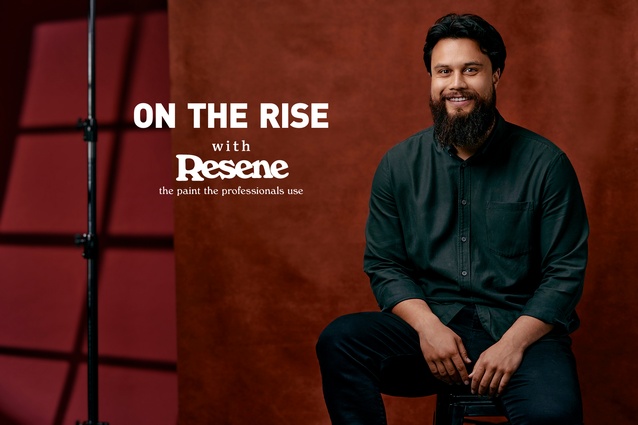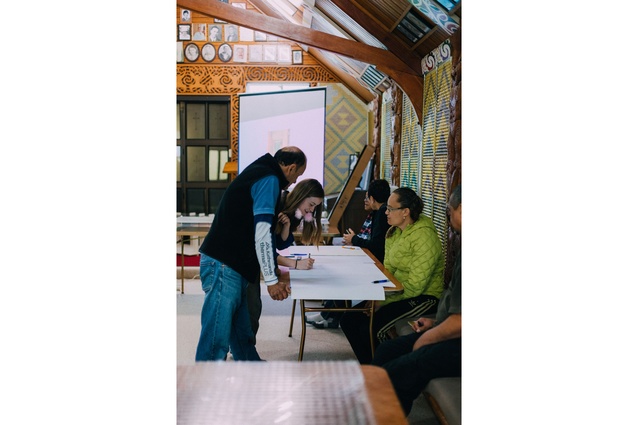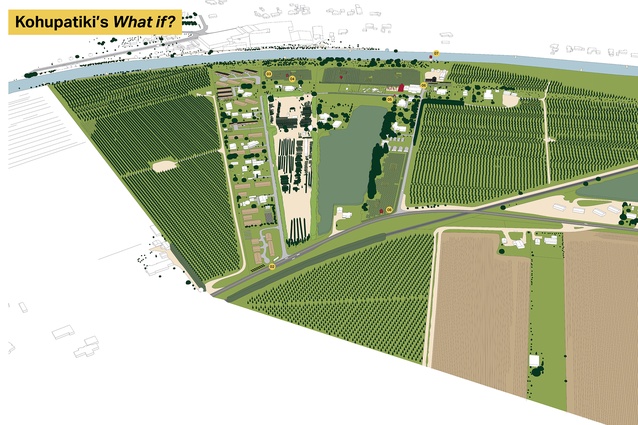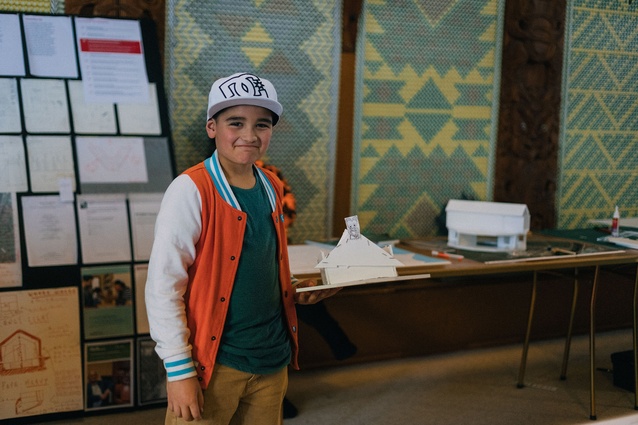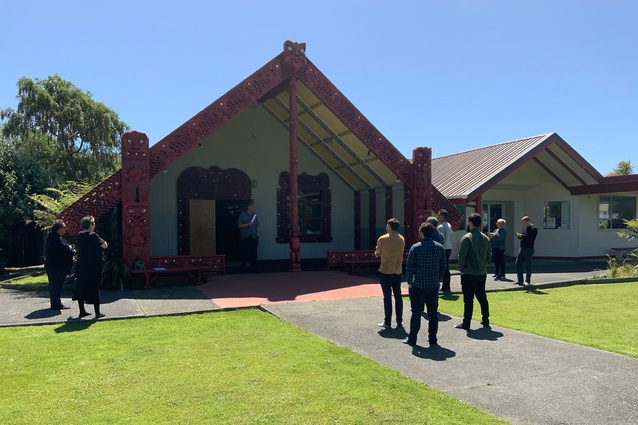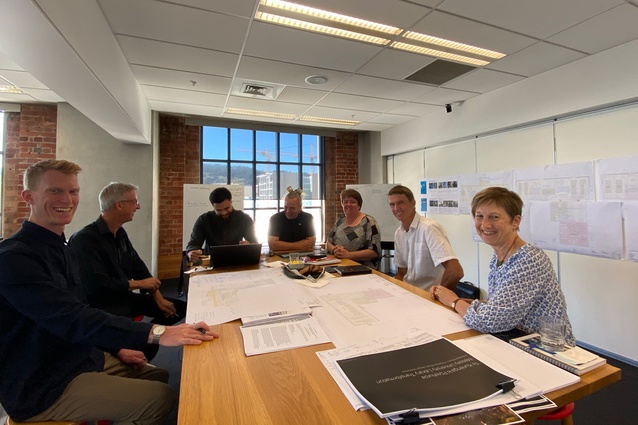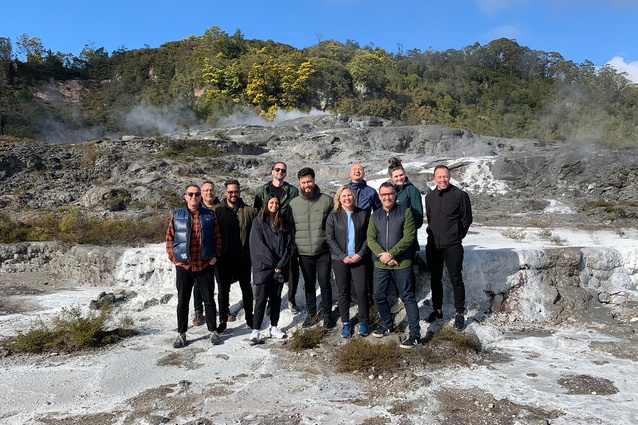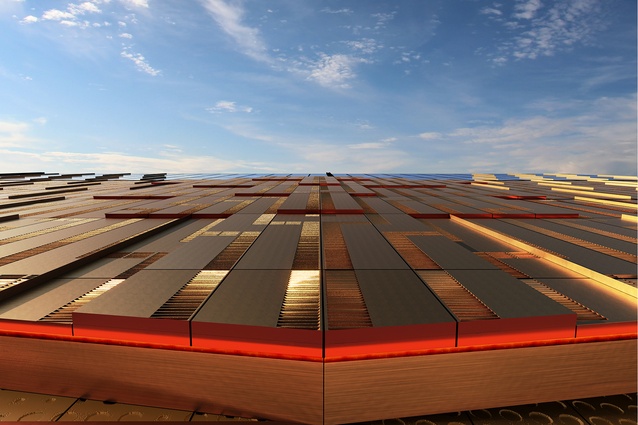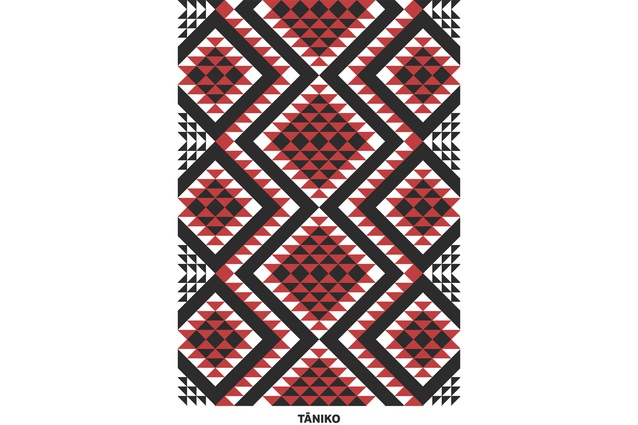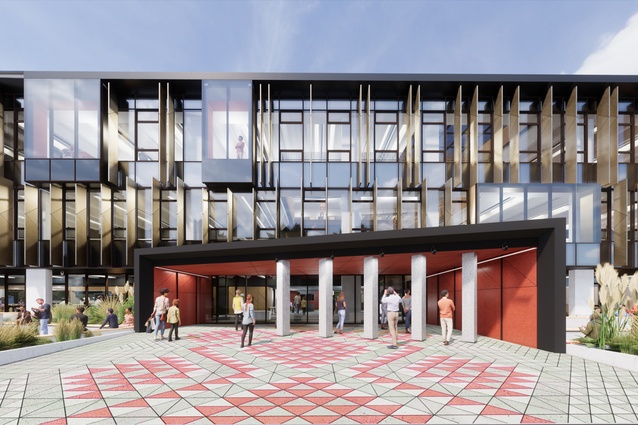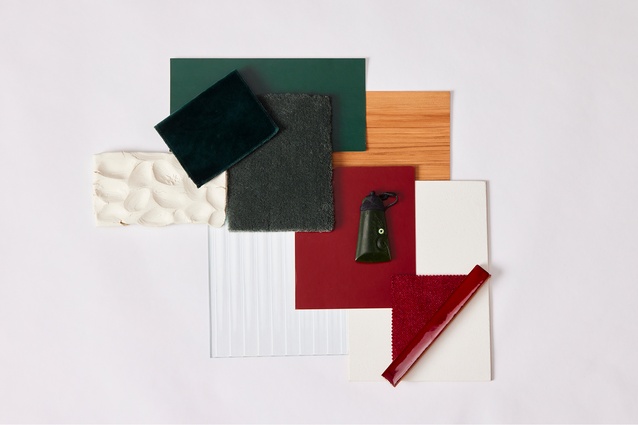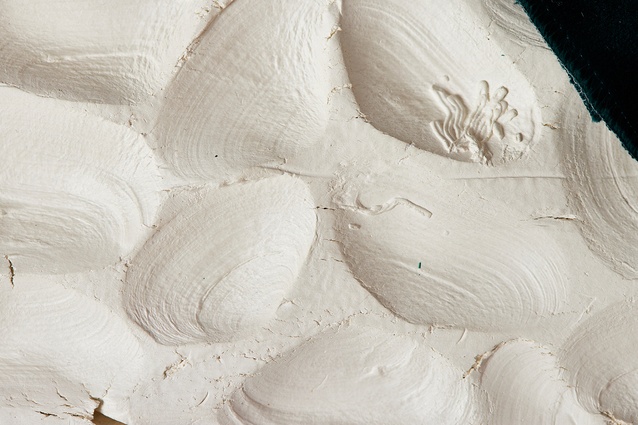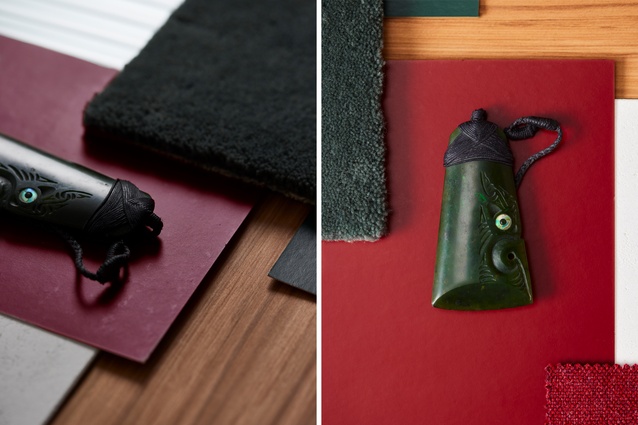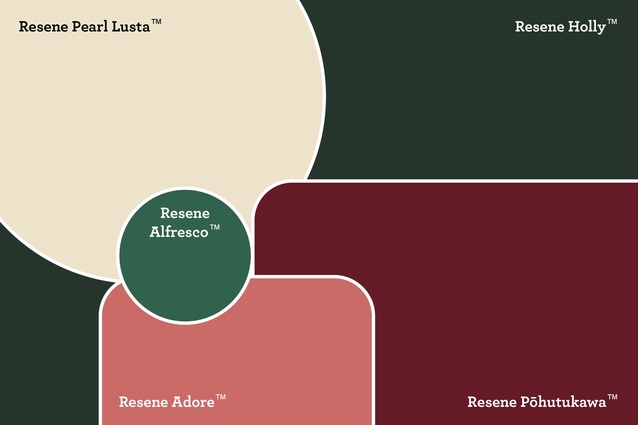On the Rise: Jahmayne Robin-Middleton
ArchitectureNow’s On the Rise series, supported by Resene, profiles young designers from across the country who are shaping the future of the industry. This month, we talk to Jahmayne Robin-Middleton (Ngāti Kahungunu, Ngāpuhi, Ngāti Tūwharetoa, Ngāti Maniapoto and Ngāti Rongomaiwahine) who has recently joined Warren and Mahoney after graduating from Victoria University of Wellington’s school of architecture. He talks about his journey so far and those who have influenced him and continue to do so.
Ashley Cusick (AC): Let’s start at the beginning. Tell us how you first became interested in architecture and what made you decide to study it?
Jahmayne Robin-Middleton (JRM): I had a really awesome career advisor at the boarding school I went to. The initial plan was for me to study building science. I didn’t know a lot about architecture when I was in high school but I was really into subjects like Art and Graphics and was alright at Maths and English, so the career advisor pointed me towards building science. In terms of what pushed me, that’s easy. That was my whānau. I would be the first person in my immediate whānau to go to university.
I got through my first year at Vic, where you get exposure to all the different disciplines – architecture, interiors, landscape and building science. The fact that they’re all different disciplines and you can specialise in one was even a new learning for me. Through being exposed to architecture, I found I really liked it and I just fell into it.
AC: Was it more the creative side of architecture that appealed to you over building science?
JRM: Yes. I think there’s something really exciting about being able to story-tell through the built environment. Reflecting on my work through uni, and even my mahi now since starting at Warren and Mahoney, narrative always plays a very large part in all the projects I’ve been involved with. I think being able to tell stories through built form is a cool skill to have as well.AC: And I believe you’ve had the opportunity to do this in a couple of projects you’ve been involved with since starting at Warren and Mahoney?
JRM: Āe, that’s right. As the project’s gone live now, I can speak to the Heke Rua Archives project, which I’ve been actively involved with since starting at Warren and Mahoney. It’s been a really special project to be part of and has presented many opportunities to grow, not just as an architectural graduate but also as a Māori design practitioner.
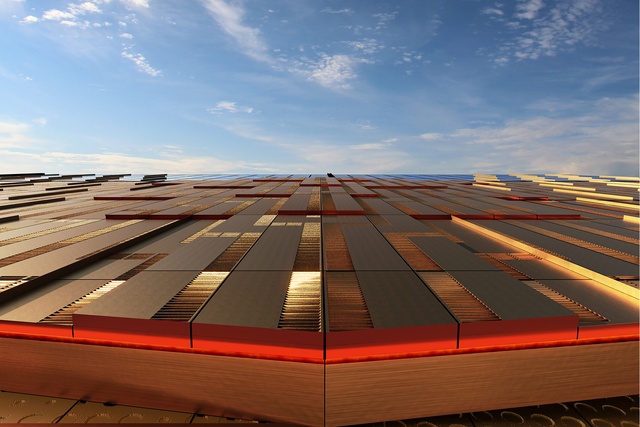
The design partnership formed between us (as the design team) and various representatives of Taranaki Whānui Te Āti Awa was incredible. We were carrying out day-long, face-to-face, co-design workshops two days a week, for a solid 3–4 months. A design partnership such as this with mana whenua is very rarely exercised in architectural projects, and to be able to sit in the same room as the likes of Rangi Kipa, actively discuss, sometimes debate, and generate design outcomes for Heke Rua has been amazing. I’ve had the opportunity to be part of a project which will hopefully help reinstate the presence of mana whenua. Added to that, I like to think we’ve produced an outcome that resonates with all and reflects and celebrates the identity of Aotearoa New Zealand.
The same goes for the mahi we’ve done for the new Massey University Library in Te Papaioea (Palmerston North). Since day one, Massey’s leadership has blown me away with their progressive attitude towards Te Tiriti o Waitangi. We’ve exercised an incredibly rich design partnership, working with the likes of Meihana Durie and Warren Warbrick to deliver a Tiriti-led library, for a Tiriti-led university.
AC: Did you struggle with the lack of representation of Māori in the industry?
JRM: E mōhio ana au tērā whakaaro. I’m well aware of this kōrero but, for me, that’s just my normal. That’s been my normal throughout my upbringing. From a fairly young age, I just accepted that it’s the reality of things. I understand the situation that we’re in at the moment with regards to diversity in the architecture profession. There’s probably a bit of mahi to do. But, from what I’ve been exposed to so far, that’s kind of the case across all white-collar professions. We’ve all got a bit of mahi to do.
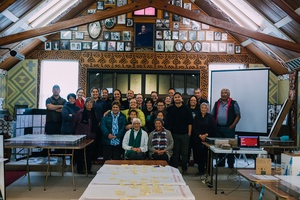
I try not to think about that too much. I’ve got too many other things going on. I’ve never had issues with it. I respect my colleagues’ space and they respect mine. There has never been any major raruraru or dramas. I understand that’s how things are and don’t let it get me down. The best thing I can do for myself and my whānau and my people is to be me. Working in a profession such as architecture, being Māori, I’ve realised that I’m not only representing myself, I’m representing all my whānau as well.
I think there are some additional pressures placed on Māori, and this can depend on the practice you’re in. But I like to look at these as opportunities for development. As a Māori grad, you can either choose to take those challenges on or put them to the side. For me, I’m still growing as an architectural practitioner but I’m also growing as a Māori design practitioner at the same time. While I’m developing all the typical architecture skills, I’ve had other opportunities (or challenges) come my way that I’ve put my hand up for – that has allowed me to grow as a Māori designer as well. It’s the same story for a lot of Māori who are entering into their early to mid-twenties, where they start to engage more with that side of their identity, ko au he tauira. I am an example of that. I spent a lot of time on the marae growing up but things like te reo Māori, my understanding of tikanga and kawa – I didn’t take a deep dive into that until I started at Warren and Mahoney, which is around the same time I began my language learning journey through Te Wānanga o Aotearoa. Mokori anō kia rere a mihi ki a rātou. Mō te mahi whakaako, kāore he painga!
AC: You mentioned that you respect your colleagues’ space and they respect yours. Do you mean that they bring their perspective and you’re free to bring yours?
JRM: Yes. I think it’s one of the reasons that Warren and Mahoney is such a successful design studio. We have a diversity of voices that we’re able to bring to the design table. During discussions and project inception, we’ve got all of these different voices that we can bring together in moulding a concept. There’s diversity in terms of ethnic backgrounds and gender but also in terms of experience and specialisms. We have different specialist sectors and we’re able to bring together all these voices to ensure that, hopefully, we’ll deliver an outcome that exceeds the expectations of our client partners.
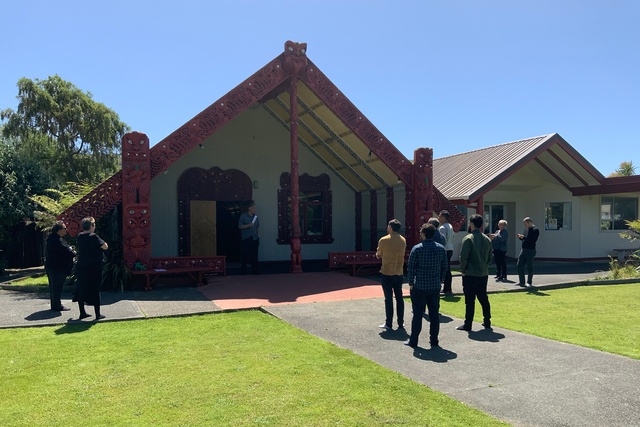
I can reflect on how much our Māori whānau here at Warren and Mahoney has grown since I’ve started. Of all the things that I’ve been able to be a part of or develop, witnessing how much Te Matakīrea (our indigenous design rōpū) has grown over the last few years has been special to me. And, to add to that, my non-Māori colleagues are helping take some of that weight off our Māori practitioners’ shoulders by taking up leadership opportunities in that space. It’s small things. I’ll overhear non-Māori work colleagues greeting clients with mōrena, or kia ora. At the other end of the spectrum, they’re encouraging our clients to engage with mana whenua from the outset of projects. That’s just one example. All of that is music to my ears.
AC: How did those opportunities to develop come about within your professional work?
JRM: I’ve had excellent leaders at Warren and Mahoney in terms of helping me develop as an architectural practitioner. There are certain skills that only another, more-senior Māori design practitioner can teach a fresh Māori grad. I’m able to receive that with practitioners outside of Warren and Mahoney. For almost all projects, where we engage with mana whenua, they will put forward some kind of pūkenga or mātanga or, for lack of a better term, indigenous creative practitioner, who will join the team and they’ll help us in delivering kaupapa-based design outcomes. I’ve had the opportunity to work with people like Rangi Kipa, Warren Warbrick and Meihana Durie. You learn so much through those experiences, being able to work alongside them, in terms of both how a Māori designer thinks but also how they conduct themselves in a room full of non-Māori people. Much of my journey so far has been about me trying to find my feet and what I want to try and bring to the table.
Saying that, Warren and Mahoney has found many opportunities for me to grow outside of the practice. An example would be our partnership with Te Puni Kōkiri for a cadetship programme where we’ve been able to get funding to go towards professional development that I’m interested in. I’ve always had a quiet interest in whakairo, or traditional carving, so that’s something that funding will go towards. I’m in discussions with a local carver, who wouldn’t describe himself as a kaiwhakairo but he is a master carver in his own right. Once I get my tools, he’s going to show me a thing or two.
Whare Timu now heads Te Matakīrea at Warren and Mahoney and he’s awesome. As Māori grads come through, he provides excellent leadership for them. The practice has naturally evolved in terms of our cultural values and principles, our ability to engage with indigenous communities, and work in accordance with the various mātāpono associated with Te Kawenata o Rata.

AC: Finally, we ask our On the Rise participants to create a mood board using Resene products. Can you tell us what inspired your colour choice and the form of your mood board?
JRM: My mood board features colours, samples, studies and prompts that have always resonated with me as a creative. I received my toki pounamu (greenstone adze) a few years ago from a close friend of mine, following a very challenging time in my life. I fell in love with the small flecks of green that can be seen when closely inspected and the pāua accent that draws attention to the manaia detailing. Kōkōwai is a deep red that has made its way into several projects I’ve worked on. It’s often used when painting whakairo that features on and in wharenui. I believe it’s because of this that I’ve always had an affinity for the colour – it kind of reminds me of home. Other samples have been selected for their textural and tactile qualities. The study with pipi shell impressions came from a co-design wānanga between myself and a local māngai (mana whenua representative) and highlights the significance of design in storytelling and placemaking.
See more from the On the Rise series here.

